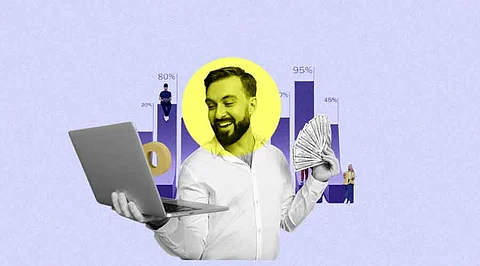

Market basket analysis (MBA) is a data mining technique that identifies patterns and associations between products and services that are frequently purchased together. MBA can be used to gain insights into customer behavior, improve product placement, develop targeted marketing campaigns, and increase sales.
Here are seven ways to leverage market basket analysis to make more money:
Cross-selling is the practice of recommending complementary products or services to customers who have already purchased a particular product or service. MBA can be used to identify product complements and develop cross-selling strategies.
For example, a grocery store might use MBA to identify that customers who purchase diapers are also likely to purchase baby wipes. The store could then use this information to cross-sell baby wipes to customers who are purchasing diapers.
Recommendation engines use data about customer behavior to suggest products or services that customers are likely to be interested in. MBA can be used to train recommendation engines to generate more accurate and relevant recommendations.
For example, an online retailer might use MBA to identify that customers who purchase books about machine learning are also likely to purchase books about artificial intelligence. The retailer could then use this information to recommend books about artificial intelligence to customers who are viewing books about machine learning.
Product placement is the arrangement of products in a store or on a website to increase sales. MBA can be used to identify product pairings that are likely to encourage customers to purchase multiple items.
For example, a grocery store might use MBA to identify that customers who purchase milk are also likely to purchase eggs. The store could then place milk and eggs near each other in the store to encourage customers to purchase both items.
Affinity promotion is a type of promotion that offers customers discounts or other incentives to purchase multiple items together. MBA can be used to identify product combinations that are eligible for affinity promotions.
For example, a grocery store might use MBA to identify that customers who purchase cereal and milk together are likely to save money if they purchase both items at the same time. The store could then offer a discount on cereal and milk to customers who purchase both items together.
Customer segmentation is the process of dividing customers into groups based on their shared characteristics and behaviors. MBA can be used to identify customer segments with similar purchasing patterns.
For example, a clothing retailer might use MBA to identify two customer segments: One segment that is interested in casual clothing and another segment that is interested in formal clothing. The retailer could then develop targeted marketing campaigns for each customer segment.
Price optimization is the process of setting prices to maximize profits. MBA can be used to understand how customers respond to different price points.
For example, a grocery store might use MBA to identify that customers are willing to pay a premium for organic produce. The store could then set higher prices for organic produce to increase profits.
MBA can be used to identify new product opportunities. For example, a grocery store might use MBA to identify that there is a high demand for products that are convenient and easy to prepare. The store could then develop new products that meet this demand, such as pre-cut fruits and vegetables or ready-to-eat meals.
Join our WhatsApp Channel to get the latest news, exclusives and videos on WhatsApp
_____________
Disclaimer: Analytics Insight does not provide financial advice or guidance. Also note that the cryptocurrencies mentioned/listed on the website could potentially be scams, i.e. designed to induce you to invest financial resources that may be lost forever and not be recoverable once investments are made. You are responsible for conducting your own research (DYOR) before making any investments. Read more here.
